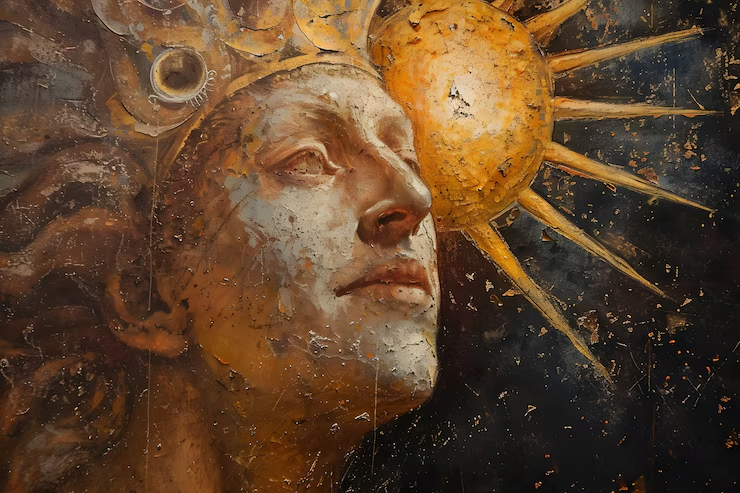Ancient art is more than just drawings on cave walls or statues in old temples. It is a powerful form of storytelling, identity, and culture. The keyword “ancient artz” brings a modern twist to an age-old subject, attracting both curious learners and art lovers. In this article, we will explore what makes ancient art timeless and how its creativity still influences us today.
What Is Ancient Artz?
“Ancient artz” refers to the creative works produced by early civilizations. This includes paintings, sculptures, pottery, carvings, and architecture. From the pyramids of Egypt to the pottery of ancient Greece, these art forms give us clues about the lives, beliefs, and values of people from long ago.
The word “artz” is a modern variation of “arts,” often used to connect traditional ideas with a fresh perspective. It can represent a new appreciation for old masterpieces, blending history with today’s creative expression.
The Roots of Creativity in Early Civilizations
Ancient artz has deep roots in early human history. People in prehistoric times used natural materials like stone, bone, and clay to create tools and decorate their surroundings. Cave paintings in France and Spain are among the oldest known examples of ancient artz.
These artworks were not just for decoration. They told stories, honored gods, or marked special events. As societies grew more complex, so did their art. Each culture added its unique style and purpose to what we now call ancient artz.
Ancient Egyptian Art: A Symbol of Eternity
Egyptian art is one of the most well-known forms of ancient artz. It is famous for its use of symbols, gods, and detailed carvings. Artists created wall paintings, statues, and jewelry with great care. These artworks were not just for beauty. They were believed to help guide the dead in the afterlife.
Hieroglyphs, the written symbols of the Egyptians, often appear in their art. These images had meanings and told stories. The art of ancient Egypt is a perfect example of how ancient artz blended function with creativity.
Greek and Roman Contributions to Ancient Artz
Greek art focused on beauty, balance, and human form. Sculptures like the Venus de Milo show how skilled these artists were. They believed that art should reflect the ideal human body and the harmony of nature.
Roman art borrowed from the Greeks but added new elements like detailed mosaics and grand architecture. The Colosseum and Roman temples are examples of their contribution to ancient artz. They used art not only for worship but also to show power and status.
Asian Influence on Ancient Artz
Asia has a rich tradition of ancient artz. In China, artists created beautiful pottery, bronze work, and silk paintings. Calligraphy was also a highly respected art form. It combined writing and painting into a graceful expression of thought.
In India, ancient artz often depicted gods and religious stories. Temples were decorated with sculptures showing scenes from sacred texts. Meanwhile, Japanese art included simple, elegant forms such as ink paintings and woodblock prints.
Native American and African Ancient Artz
Native American art includes rock carvings, beadwork, and pottery. Each tribe had its own style, often tied to spiritual beliefs and nature. Masks, totem poles, and textiles were also important parts of their ancient artz.
African ancient artz is known for its bold forms and symbolic meanings. Sculptures made of wood, metal, and ivory represented ancestors, spirits, and deities. These works were not just for display; they played a role in ceremonies and daily life.
Common Themes in Ancient Artz
Across cultures, ancient artz shares some common themes:
- Religion and Spirituality: Many ancient artworks were created to honor gods, spirits, or the afterlife.
- Nature and Animals: Art often showed the natural world and animals that were important to the people.
- Human Form and Identity: Sculptures and paintings depicted people, often idealized or symbolic.
- Power and Leadership: Kings, pharaohs, and emperors were frequently featured in ancient artz to show authority.
Materials and Techniques Used in Ancient Artz
Artists in ancient times used whatever materials were available. Stone, wood, clay, metal, and natural pigments were commonly used. Techniques varied, including carving, painting, weaving, and molding.
The lasting power of these artworks shows the skill and creativity of ancient artists. Even with simple tools, they created pieces that still amaze us today.
Why Ancient Artz Still Matters
You might wonder why ancient artz is still relevant. The answer lies in its lasting impact. These works tell us who we are and where we come from. They connect us with the human experience across time.
Artists today often look to ancient artz for inspiration. Museums around the world display these pieces, showing their beauty and importance. They help us learn about history, religion, and culture in a way that books cannot.
The Modern Take on Ancient Artz
In today’s world, ancient artz is being reimagined. Artists mix traditional forms with new materials and ideas. Digital technology allows us to view and even recreate ancient pieces. This blend of old and new keeps the spirit of ancient creativity alive.
Even in fashion, design, and popular culture, the influence of ancient artz can be seen. Patterns, symbols, and styles from ancient times are often used in modern works.
Learning from Ancient Artz
Studying ancient artz teaches us many things:
- Creativity is timeless. No matter the tools or materials, people have always found ways to express themselves.
- Culture shapes art. The beliefs, values, and lifestyle of a society are reflected in its art.
- Art is communication. It tells stories, shares ideas, and connects people.
Ancient Artz in Education and Research
Ancient artz is a key part of education. Schools and universities use it to teach history, art, and social studies. Researchers study ancient artworks to uncover facts about the past.
Archaeology and art history often overlap. When an ancient object is found, experts analyze it for clues. This work helps piece together human history.
Preserving the Legacy of Ancient Artz
Many ancient artworks are fragile. Time, weather, and human actions can damage them. That is why preservation is so important. Museums and experts work to protect and restore these treasures.
Digital records and 3D scans are now used to save the details of ancient artz. These tools help future generations learn from and enjoy these works.
Visiting Ancient Artz Around the World
If you love art and history, visiting ancient artz in person can be unforgettable. Here are some famous places:
- The Egyptian Museum in Cairo
- The Acropolis in Athens, Greece
- The British Museum in London
- The Great Wall of China
- The temples of Angkor Wat in Cambodia
These sites and museums offer a chance to see ancient artz up close. They help bring history to life.
Final Thoughts on Ancient Artz
Ancient artz is more than just old objects. It is the living memory of human creativity. From cave walls to royal tombs, every piece has a story to tell. Exploring this legacy helps us understand our past and inspires our future.
By studying ancient artz, we celebrate the talent and vision of early artists. Their work continues to influence the world of art, culture, and design today. Whether you are an artist, student, or history lover, there is always something new to learn from the classic creativity of ancient artz.



